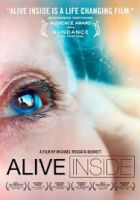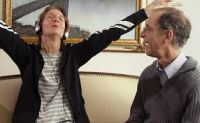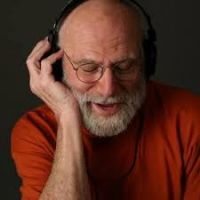Alive Inside – The Story of Music and Memory
 Alive Inside is a wonderful new documentary that looks at the effects of music on people with Alzheimer’s and other age related dementia. Film subjects Oliver Sacks and Dan Cohen explain why music acts as a back door to memory, and share tips for enjoying music with the elders in our lives. This was one of the last projects that Oliver Sacks, noted neurologist and author, was working on before his death last month. In his book, Musicophilia, Sacks explored the connections between music and the brain, and focused on people afflicted with strange musical disorders or powers – “musical misalignments.”
Alive Inside is a wonderful new documentary that looks at the effects of music on people with Alzheimer’s and other age related dementia. Film subjects Oliver Sacks and Dan Cohen explain why music acts as a back door to memory, and share tips for enjoying music with the elders in our lives. This was one of the last projects that Oliver Sacks, noted neurologist and author, was working on before his death last month. In his book, Musicophilia, Sacks explored the connections between music and the brain, and focused on people afflicted with strange musical disorders or powers – “musical misalignments.”
There’s a lot of research documenting the benefits of music therapy. According to the psychology website www.spring.org.uk music and memory have a tremendously strong link. Hearing an old song can take you back decades in the blink of an eye.
Singing aids language learning
 The link between music and memory is so strong that it can help you learn a foreign language. Research by Ludke et al. (2013) found that people trying to learn Hungarian, a notoriously difficult language, performed much better if they sang the Hungarian phrases rather than just saying them. The researchers think that the melody may provide an extra cue which helps embed the memory.
The link between music and memory is so strong that it can help you learn a foreign language. Research by Ludke et al. (2013) found that people trying to learn Hungarian, a notoriously difficult language, performed much better if they sang the Hungarian phrases rather than just saying them. The researchers think that the melody may provide an extra cue which helps embed the memory.
Music and memory: the injured brain
People who have suffered traumatic brain injuries (TBIs), such as in a car accident, often have problems with memory. Music is increasingly being tested as a way to help bring back forgotten autobiographical memories. A recent study had participants who had suffered severe TBIs listening to number-one songs from their lifetimes to see what memories were evoked (Baird & Sampson, 2013).
The memories brought back were mostly of people or a period of their lives and were broadly similar to those evoked by control participants who did not have a TBI. Compared with using a standardized interview—the Autobiographical Memory Interview—playing number-one hits to people who’d suffered TBIs was more effective in eliciting memories.
Widespread brain activation
One of the reasons the link between music and memory is so powerful is that it activates such large areas of the brain.A recent brain imaging study found that music activated the auditory, motor and limbic (emotional) regions (Alluri et al., 2013). The study found that whether their participants were listening to the Beatles or Vivaldi, largely the same areas of the brain were active.The motor areas process the rhythm, the auditory areas process the sound, while the limbic regions are associated with the emotions (Alluri et al., 2013).
Music can take you back two generations
 Classic hits can easily take you back to your teens and twenties. Most people have particularly strong memories of this time in their lives—psychologists have called it the ‘reminiscence bump’. But, perhaps surprisingly, one study has shown that people also have mini reminiscence bumps for the music their parents listened to, and even for their grandparents’ music (Krumhansl & Zupnick, 2013).
Classic hits can easily take you back to your teens and twenties. Most people have particularly strong memories of this time in their lives—psychologists have called it the ‘reminiscence bump’. But, perhaps surprisingly, one study has shown that people also have mini reminiscence bumps for the music their parents listened to, and even for their grandparents’ music (Krumhansl & Zupnick, 2013).
Another study has shown that we don’t even need to hear the tune to active the link between music and memory—the words are enough (Cady et al., 2008). For a whole generation, the words “Ice, ice baby”, and for another generation “…living in the gangsta’s paradise” are enough to take them back in time.
Dona te money or an iPod to Music and Memory No one wants to end up alone and isolated in a nursing home. It’s hard enough to lose someone you love to Alzheimer’s or other forms of dementia. It’s terrifying to think you could end up there yourself, someday. On the website for Alive Inside , the documentary and project, www.musicandmemory.org you can learn more about bringing music to those who need it. You can find resources for starting your own iPod drive at a local nursing home, helping your loved ones, and how to donate money or an iPod.  Click here for the Youtube video by Dan Cohen Click here for the Alive Inside trailer, or to purchase the film
Click here for the Youtube video by Dan Cohen Click here for the Alive Inside trailer, or to purchase the film
